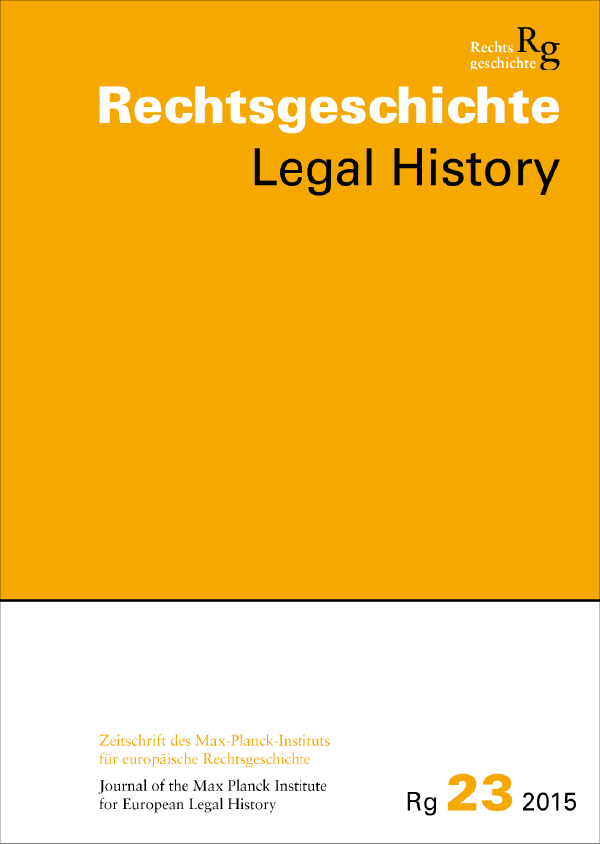Zentralität in der Peripherie: Kirchengebäude als Orte des »Sonderfriedens« in den frühmittelalterlichen leges
DOI:
https://doi.org/10.12946/rg23/068-081Abstract
In the early middle ages, specific protective rights were granted, among others, to church buildings. While legal historians investigating the legal protection of church buildings up till now stressed the jurisdictional concept of a »higher peace«, cultural history has drawn attention to the concepts of sanctuary and immunity. Drawing upon sources spanning from the Lex Salica to the capitularies and canon law of the 9th century, the present article argues that peace, sanctuary and immunity are not to be understood as rooted in one concept, as is generally done, but rather they have to be understood as different legal concepts that only occasionally come together. Furthermore, I propose that the protection of church buildings is not an expression of taboo related to the sacral sphere of the king or the sacrality of the church building, but instead must be seen as rooted in a concept of honor that includes a spatial dimension and can be traced back to the motif of ›fear of God‹, but is ultimately guaranteed by law. The different concepts thus refer to the notion of churches not just as cult centres, but public protected areas, whose protection is part of a complex and comprehensive effort to restrict ‘self-help’. From the perspective of the issue of centrality and periphery, the example clearly shows that this opposition is completely dissolved because places were created, instituted through legal protection, even at the periphery.
Downloads
Veröffentlicht
Zitationsvorschlag
Ausgabe
Rubrik
Lizenz
Copyright (c) 2015 Autor/in

Dieses Werk steht unter einer Creative Commons Namensnennung - Nicht-kommerziell - Keine Bearbeitung 3.0 International -Lizenz.





